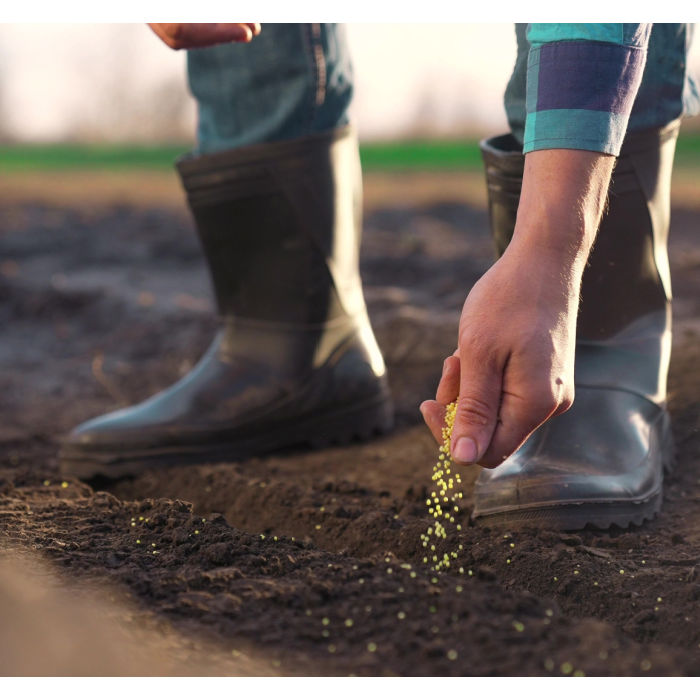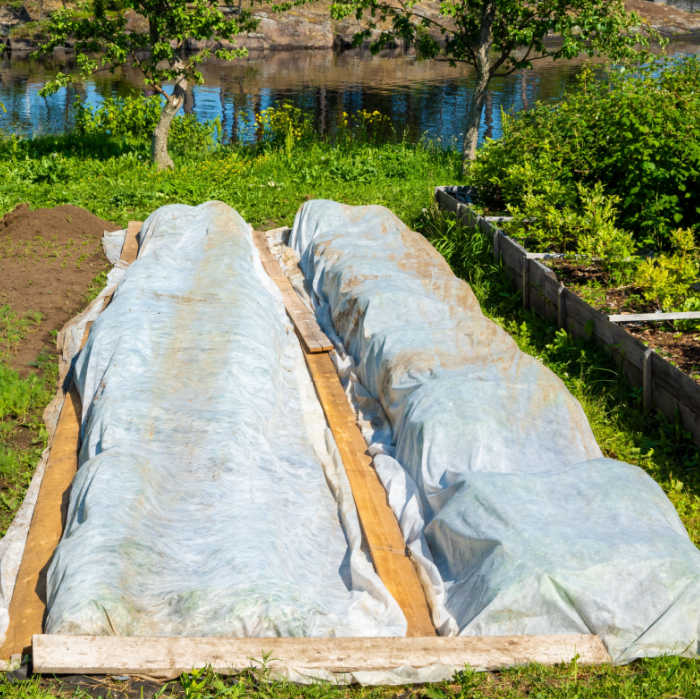 |
Written By Lara Wadsworth |
As winter loosens its grip and the days grow longer, avid gardeners eagerly anticipate the arrival of spring. February marks a pivotal time for garden planning and preparation, especially for those keen on direct-sowing cool-season vegetables. These resilient crops thrive in the cool temperatures of early spring, promising a bountiful harvest even before the heat of summer sets in. Here, we explore ten versatile vegetables that can be directly sown (in situ) in early spring, setting the stage for a productive and delicious growing season.
Spring Vegetables
1. Peas (Pisum sativum)
Peas are the quintessential cool-season crop, perfect for direct sowing as soon as the soil is workable. Varieties like 'Sugar Snap' and 'Early Frosty' are well-suited for early spring planting and can even endure mild frost. Provide support, ensuring they have a sturdy trellis or fence to cling to as they grow.
2. Radishes (Raphanus sativus)
Known for their rapid growth, radishes are excellent candidates for direct sowing in early spring. Varieties like 'Cherry Belle' or 'French Breakfast' yield crisp, peppery roots in as little as 20-30 days. Plant them in well-drained soil for a quick and satisfying harvest.
3. Spinach (Spinacia oleracea)
Spinach is a nutrient-rich green that thrives in cooler temperatures. Direct sow varieties like 'Bloomsdale' or 'Lakeside' in late winter for an early crop of tender leaves. Ensure they receive ample sunlight and have well-drained soil for optimal growth.
4. Lettuce (Lactuca sativa)
Lettuce varieties such as 'Butterhead' or 'Romaine' are excellent choices for direct sowing in the cool days of late winter. Plant seeds in succession for a continuous harvest. Keep the soil consistently moist and provide shade in warmer regions to prevent premature bolting as the summer heat sets in.
5. Kale (Brassica oleracea var. acephala)
Kale is a cold-hardy leafy green that thrives in early spring. Varieties like 'Lacinato' or 'Black Magic' can be directly sown for a nutrient-packed addition to your garden. These robust greens are nutritious and add a touch of beauty to the landscape.
6. Carrots (Daucus carota sativus)
Carrots are a root vegetable that can be directly sown in late February for a sweet and crunchy harvest. Choose varieties like 'Nantes' or 'Cosmic Purple' and sow them in well-loosened, stone-free soil to encourage straight root development. Be sure to thin the seedlings so they have lots of room to grow!
7. Beets (Beta vulgaris)
Beets are another root vegetable that thrives in cooler temperatures. Varieties like 'Detroit Dark Red' or 'Chioggia' offer vibrant colors and earthy flavors. Direct sow beet seeds in well-drained soil and thin them out as they grow for optimal root development.
8. Onions (Allium cepa)
Green onions (scallions) or leeks are ideal for direct sowing in early spring. These versatile vegetables add a mild onion flavor to salads and dishes. Sow seeds in well-prepared soil and enjoy a continuous harvest by harvesting as needed.
9. Swiss Chard (Beta vulgaris subsp. vulgaris)
Swiss chard is a resilient leafy green that can be directly sown in late February. Varieties like 'Bright Lights' or 'Fordhook Giant' provide a colorful addition to your garden while offering a continuous harvest of nutritious leaves.
10. Turnips (Brassica rapa subsp. rapa)
Turnips are a hardy root vegetable that can withstand cooler temperatures. Varieties like 'Purple Top' or 'Kanamachi' can be directly sown for a dual harvest of both the roots and tender greens. Plant in well-drained soil and thin as needed for robust turnip development.
Direct Sowing Tips for Success:
Soil Preparation
Before sowing seeds, ensure the soil is well-prepared. Amend with compost to improve fertility and drainage, providing an optimal environment for germination and growth.
Timing is Key
Late spring is the perfect time to start directly sowing cool-season vegetables. The exact week or month will differ based on your exact location. Pay attention to the specific requirements of each vegetable, as some may tolerate cooler temperatures better than others. We recommend contacting your local agricultural extension office for recommended planting dates tailored to your growing location.

Companion Planting
Utilize companion planting techniques to maximize garden space and enhance the health of your crops. For example, planting peas near carrots can benefit both crops as the peas provide a source of nitrogen while the carrots increase the productivity of the shared growing space.
Plant in Succession
To ensure a continuous harvest, consider succession planting. Sow small batches of seeds every few weeks to stagger the maturity of your crops and achieve an extended harvest.
Protect Against Frost
Be mindful of potential late frosts and protect young seedlings with row covers or cloths if needed. This extra layer can provide warmth and prevent damage. Try to remove any opaque coverings during the day so the plants can still get enough sunlight. While many of the recommended vegetables can tolerate a light frost, temperatures below 28-30 F can cause damage or death.

In conclusion, late February to April signals the beginning of a new growing season, and direct sowing cool-season vegetables is a rewarding way to kickstart your garden. Whether you're craving the crispness of fresh peas or the earthy flavors of beets, these ten vegetables offer a diverse array of options for your early spring garden. Embrace the early bounty and enjoy the delights of homegrown, cool-season produce right from your backyard. Happy gardening!
 |
Lara Wadsworth, True Leaf Market Writer |
I am a native of Southwestern Michigan, where I also reside, and I love all things plants! I got a Bachelor's Degree in Horticulture and found the first work-from-home job I could get. Now, I spend my days writing for TLM, playing with my dog, eating delicious food with my husband, and plotting my next landscape or gardening move. I believe everyone should get down and dirty in the soil now and then. Happy Gardening!


















3 comments
are the 10 direct sow cool season vegetables sold in a kit or does one by them separately?
Love your company! I’ve already ordered and recieved my 10×20 seed trays and my 3-1/2" pots that will go in them. Looking to add other items very soon. Can’t wait to get some of my seedlings started!
I too got my love of gardening from my grandmother. Not to say by any means I don’t need all the help I can get. I will share my successes as well as failure one could learn from as well.